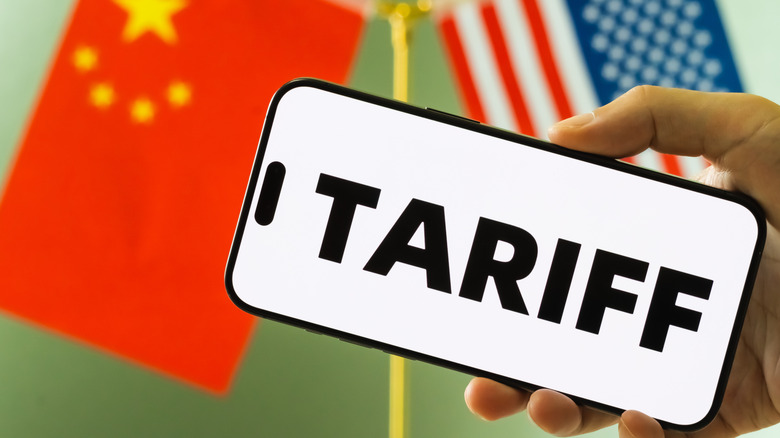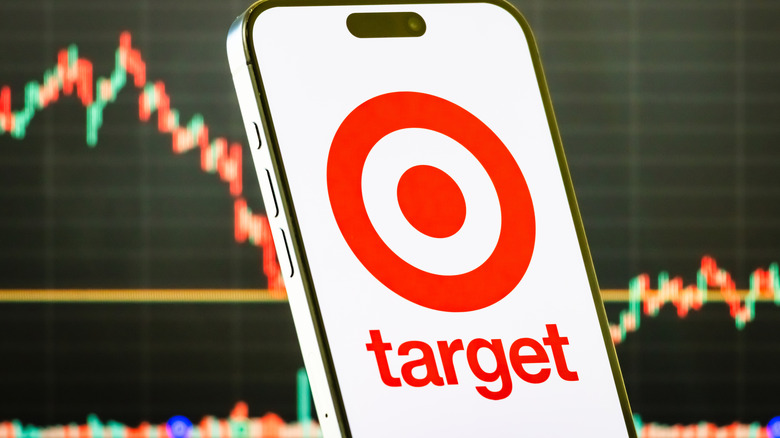Target Vs. Walmart: Which Store Will Be More Impacted By Tariffs?
As of June 2025, prices for goods that depend on being imported went up. Per the Bureau of Labor Statistics' Consumer Price Index (CPI), household furnishings and supplies rose by 1% in one month, the biggest jump since January 2022. Appliance prices went up by 1.9%, while window and floor coverings increased by 4.2%. Clothes also got more expensive, with prices going up by 0.4%. Plus, Trump's tariffs are also making American cars more costly. Overall CPI rose by 0.3%, while prices were 2.7% higher than one year prior. These numbers show that new tariffs are pushing up costs for things like furniture and recreational goods, which is sure to have serious consequences for major retailers who were already concerned about tariffs earlier in 2025.
In July, this CPI trend continued, with household furnishings going up again by 0.4% for the month, and hitting 3.4% higher than the year before. This means that as higher tariffs continue to raise prices, retailers will have to decide how, and how much, to offset those costs onto consumers. Per MarketWatch, in mid-August, analysts at Bank of America Securities reported that Target may have to raise its average prices by about 8% to cover the costs of 2025 tariffs. This is almost twice the increase similarly expected of rival retailer Walmart, which is estimated to be about 4% to 5%. The reason for this is that about one out of every two dollars that Target spends goes to buying imported products. Meanwhile it's about one out of every three dollars for Walmart.
Why Target is more exposed
Roughly half of all products that Target sells are being affected by tariffs. In Target's 2024 Annual Report, about 16% of sales came from clothing and accessories, 16% from home furnishings and décor, 15% from electronics and appliances, and 12% from beauty products. Essentials made up 18% of sales, while food and drinks were 23%. Hence, a significant portion of what Target sells comes from categories that chiefly rely on imported goods. Therefore, when tariffs make imports more expensive, Target is more likely to feels a bigger financial strain than stores that rely on fewer imported goods. Plus, Target relies heavily on its own in-house brands, which bring in over $30 billion in sales a year. However, many of these products are made in other countries, so if tariffs continue to increase Target will be left spending more to get their same products into stores.
Price increases usually happen in steps, not all at once. As Target sells out of its old pre-tariff stock and brings in new shipments that cost more, these higher costs will start to become more obvious on store shelves. Shoppers are likely to see noticeable prices increases on home goods, clothing, and small appliances– all goods the United States buys from China. Target may use special deals or promotions to try and slow down the rise in prices at first, but if tariffs last, expect to pay more.
Why Walmart may ride out tariffs better
Walmart is less affected by tariffs on imported goods because most of its U.S. sales come from groceries. In fiscal year 2025, Walmart made $276 billion from groceries, out of its $462.4 billion in total U.S. sales. That is about 60%. General merchandise made up $113.9 billion, with health and wellness hitting $62.1 billion. Since groceries are mostly sourced in the U.S. and are therefore not the focus of new tariffs, Walmart is less exposed to extra import costs than stores like Target. Walmart's Form 10-K for fiscal year 2025 also shows that the company's U.S. sales growth came mainly from grocery and health and wellness categories, showing how important food sales are for its business model.
In Q2 2025, Walmart's U.S. sales in stores open at least a year went up by 4.6%, while online sales rose by about 25% to 26%. Management said the effect of tariffs has been slow and steady, per Reuters, as customers switched to cheaper items when prices went up. The company even raised its forecast for yearly sales and profits and still served over 150 million U.S. customers per week. This shows that Walmart is handling price increases carefully, absorbing some costs, and not letting tariffs push shoppers away.


